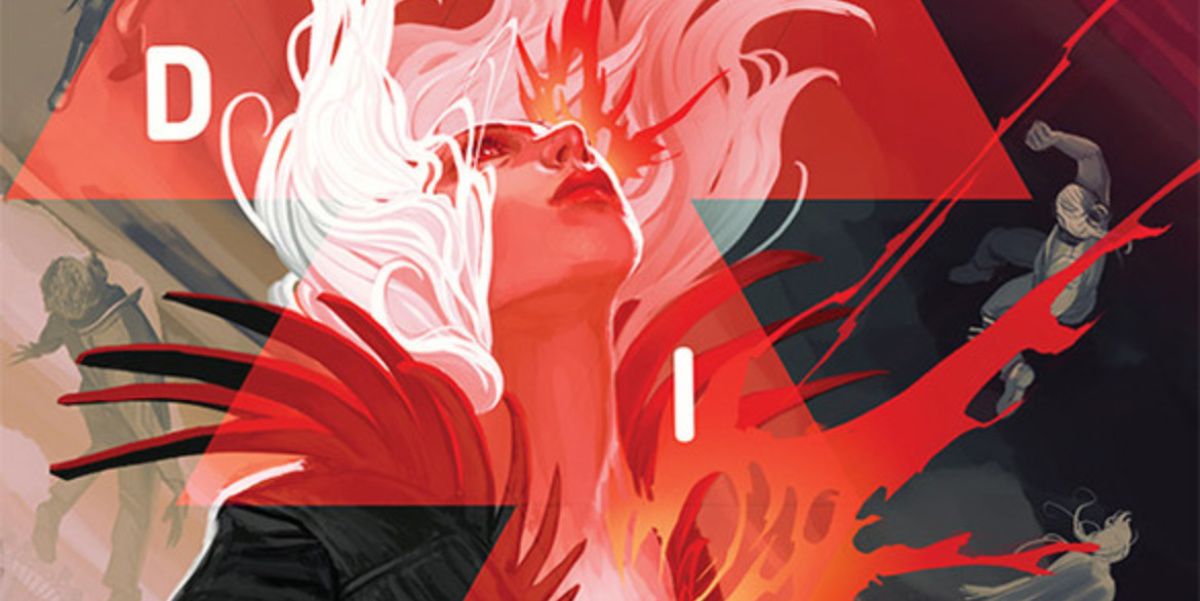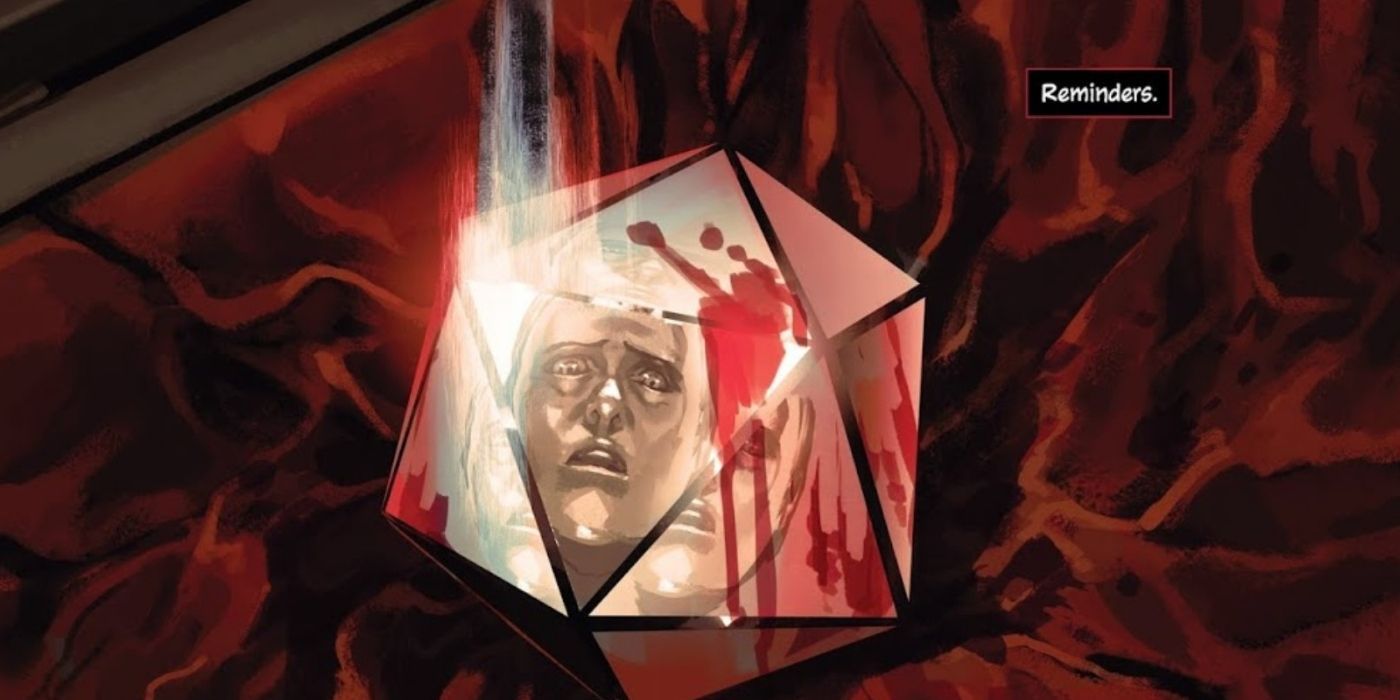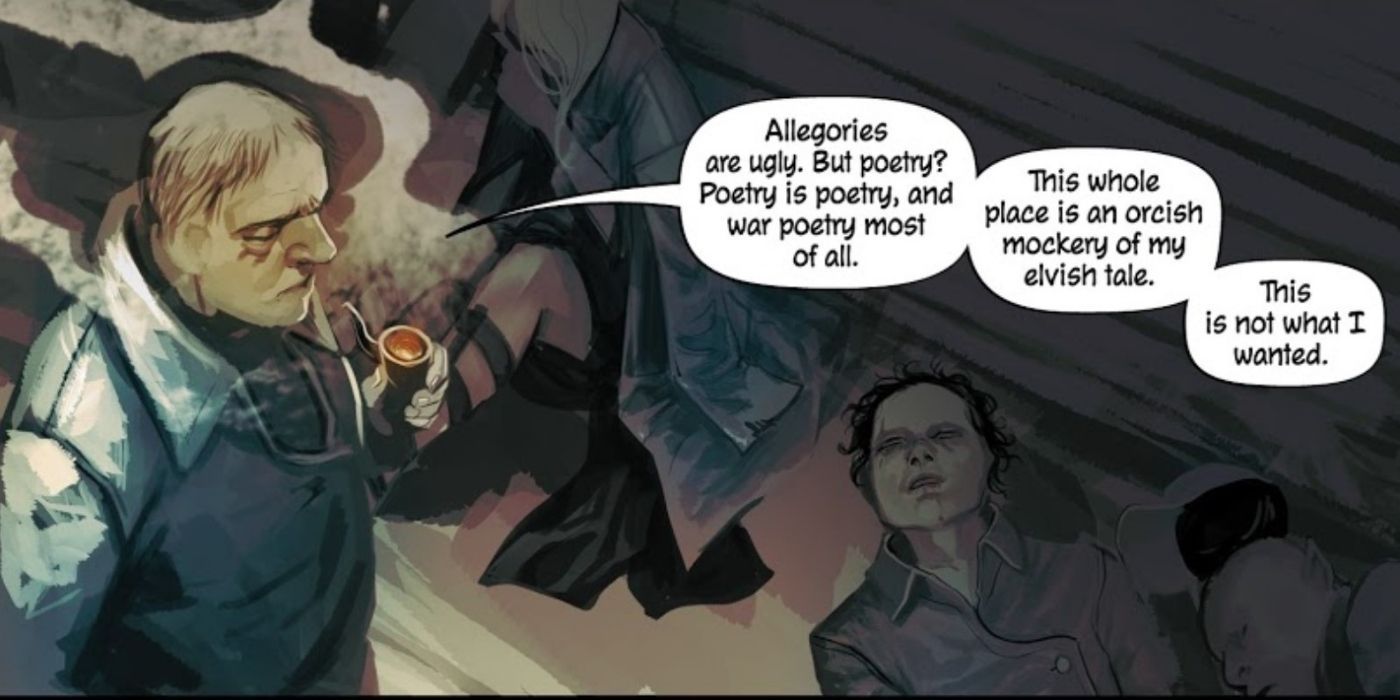The Hugo-nominated series Die from Image Comics is a philosophical and emotional exploration of Dungeons & Dragons, gaming as a whole, and fantasy literature. Written by Kieron Gillen with art by Stephanie Hans, this story follows a group of people trapped in a fantasy game.
The narrative is harrowing, heartbreaking, and inspiring at different points, but Gillen is not merely interested in telling a good story. With Die, he wields literary devices like a torturer's tools, peeling back the skin of the entire fantasy genre (and of D&D in particular), exposing the major organs beneath the surface.
While there are many stories about people getting trapped in a game world, Die is not interested in recreating this tired narrative, but rather in deconstructing it. The game's world is a giant 20-sided polyhedral, representative of the 20-sided dice (AKA D20s) used in D&D. As such, the title is a morbid pun that plays as much into a singular gaming die as the terrible deaths threatening the characters.
Six teens sat down to play an RPG before vanishing into the game. Years later, five of them returned, and one was missing an arm. They never spoke about what happened. Now adults with careers, PTSD, and midlife crises, they come together once again when the protagonist, Dominic Ash, is sent a blood-stained D20 from the original dice set. As they argue about what to do, a burst of light sucks them into the die and into the fantasy world, where they are immediately confronted by the friend they left behind twenty-five years before.
The story brilliantly mixes fantasy with horror, as the epic battles of the genre seem far less epic when one's life is actually endangered. Beyond this, the characters are forced to confront their past traumas and the teenaged insecurities that this place reminds them of. But the best example of Die's emotional and philosophical weight is in issue #3.
It opens with Ash contemplating the meaning of both Dungeons and Dragons, trapped in the dungeon-like world of Die as a winged monster unleashes its fiery breath. Two fantasy nations, agrarian Little England and dieselpunk Endless Prussia fight one another, a re-imagining of WWI's terrors where mechanized dragons rain death from the skies and scared soldiers crawl through trenches and barbed wire. Amid the fiery carnage, four Little Englanders huddle in a trench, feeling their smallness against the enormity of the horror surrounding them. This scene evokes J.R.R. Tolkien's experiences in WWI, as Hobbit-like Little Englanders confront Endless Prussia's Mordor-like war machine, wanting nothing more than to return to the comforts of home. One of them carries a wedding ring--the magic of its promised love weighing on him. He writes a letter to his son, begging the boy not to be drafted into service by the "wizards and their schemes"--a rebuke of British officers whose scheming sent boys to die.
Tolkien himself moves through the muddy trenches, echoing the opening lines of The Hobbit as he says "in a hole in the ground there died an Englander." He and Ash exchange words about the follies of war, and the differences between allegory and poetry in the writer's work. Surrounded by the dead, Ash weeps. In the issue's back material, Gillen describes Tolkien as a father figure and describes his emotional journey researching this issue.
Other literary figures such as the Brontes and H. G. Wells also appear, as their contributions to early games and real-world events are addressed, but just as interesting are the fantasy classic characters. The Seven Dwarves tragically can only feel the emotions of their names, regardless of how they wish to feel. The vampire lord Strahd is re-imagined as Lord Zamorna, whose relationship with Ash explores the coercion, abuse, and realpolitik of the feudal marriages romanticized in Gothic literature. NPCs are treated as real people whose suffering is equally real, while the main characters are forced to grapple with impossible questions as the fantasy of Die spreads death everywhere and intrudes on the lives they left behind.
These characters, as much as the narrative themes, are what makes the comic so profound. Any great story is rooted in the characters' struggles, just as any tabletop RPG brings people together for a shared storytelling experience. For all the heady themes, people are treated with respect. The first three stories have been completed, and each story arc, like each issue, explores a different facet of fantasy and gaming. Gillen has also designed a tabletop RPG for Die. The final story arc will begin with issue #16 and will delve into the lightless depths of fantasy literature's darkest setting--the dungeon.
UPDATE: An earlier version of this article misidentified Stephanie Hans. That has been corrected in the preceding.



